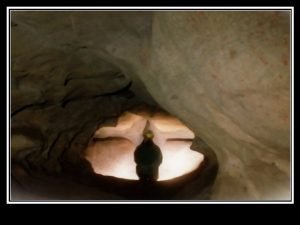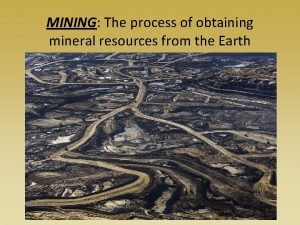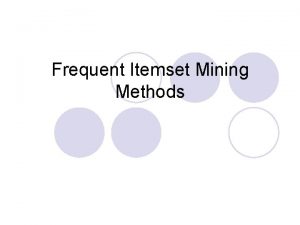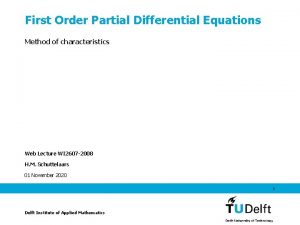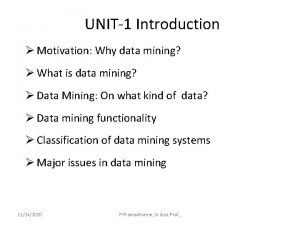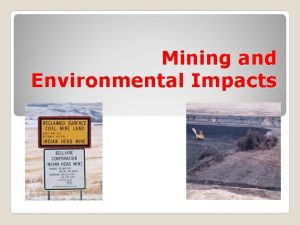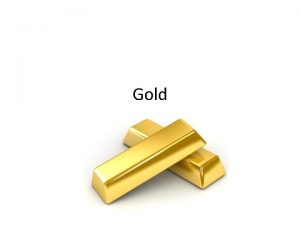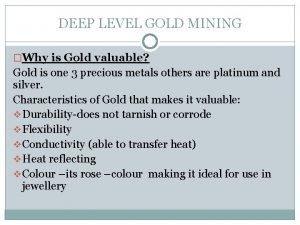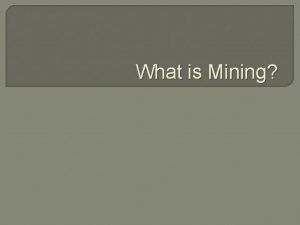Elusive Gold Gold Mining Methods Characteristics of Gold



















- Slides: 19

Elusive Gold: Gold Mining Methods

Characteristics of Gold • Rare, soft metal found in nature • Easily melted or hammered into new shapes

Characteristics of Gold • A heavy metal found buried under sand water, in rock cracks, or lining quartz rock.

Gold Panning • One person operation • Requires dipping the gold pan in water to wash away the sand gravel leaving behind the heavier gold.

Rocker/Cradle • An open box mounted on rockers that used water, the rocking motion and gravity to separate the gold from dirt.

Rocker/Cradle Operated by three miners

Long Tom • About 12 feet long • More efficient than the rocker Courtesy California State

Long Tom What other tools are the miners using? Courtesy California State Library

Sluice Box Series of riffle boxes connected together into a long chain that water flowed through. Courtesy California State Library

Water = Gold • As mining methods changed, more water was needed. • Dams and flumes were built to store and redirect water.

Hydraulic Mining • Powerful jets from water cannons (monitors) sprayed hillsides • Dirt and gravel washed into sluices

Hydraulic Mining & the Environment What happened to all that dirt and gravel?

Coyoting • A form of “dry mining” • Miners dug a hole straight into the ground. • Gravel then raised to the surface and washed in sluice boxes or crushed

Coyoting • Often the shafts were not supported and many coyote miners lost their lives in collapsed holes Coyote mine shaft still visible at Red Rock Canyon State Park

Hard Rock Mining/tunneling • Underground tunnels followed veins of gold found in quartz rock • Required large companies of men

Hard Rock Mining • Miners used drills and blasting powder to remove the gold bearing quartz

Hard Rock Mining Carts carried the ore to the surface where stamp mills crushed the quartz and gold was removed

Hard Rock Mining & the Environment Why are underground mines still dangerous today?

California Mining Legacy Columbia State. Historic. Park Bodie State
 Public opinion is both an elusive and fragile commodity.
Public opinion is both an elusive and fragile commodity. Seiser meaning
Seiser meaning Strip mining vs open pit mining
Strip mining vs open pit mining Chapter 13 mineral resources and mining worksheet answers
Chapter 13 mineral resources and mining worksheet answers Difference between strip mining and open pit mining
Difference between strip mining and open pit mining Web text mining
Web text mining Multimedia data mining
Multimedia data mining Mining complex data types
Mining complex data types Surface mining methods
Surface mining methods Apriori algorithm
Apriori algorithm Methods to avoid false discoveries in data mining
Methods to avoid false discoveries in data mining Binning methods in data mining
Binning methods in data mining Responsible gold mining principles
Responsible gold mining principles Indirect wax pattern
Indirect wax pattern Characteristics of good teaching methods
Characteristics of good teaching methods Characteristics method partial differential equations
Characteristics method partial differential equations Qualitative research characteristic
Qualitative research characteristic Mygbit cloud mining a.ş
Mygbit cloud mining a.ş Unsupervised learning in data mining
Unsupervised learning in data mining Data mining motivation
Data mining motivation

